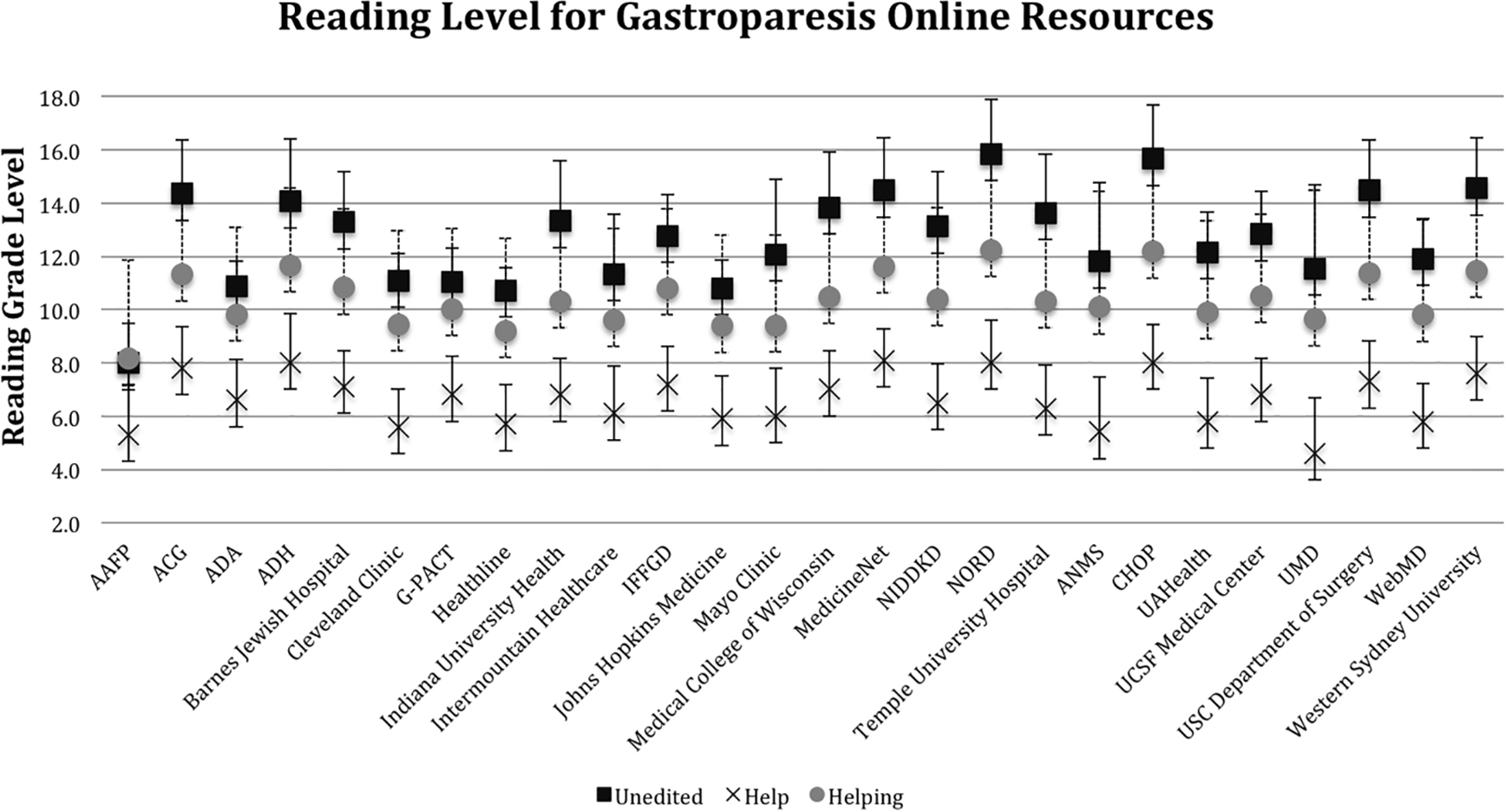
Figure 1. Reading level for gastroparesis online resources. The average grade level of the content from the 26 web resources with designated standard deviations. American Academy of Family Physicians (AAFP), American College of Gastroenterology (ACG), American Diabetes Association (ADA), Arizona Digestive Health (ADH), Barnes Jewish Hospital, Cleveland Clinic, Gastroparesis Patient Association for Cures and Treatments (G-PACT), Healthline, Indiana University Health, Intermountain Healthcare, International Foundation for Functional Gastrointestinal Disorders (IFFGD), John Hopkins Medicine, Mayo Clinic, Medical College of Wisconsin, MedicineNet, National Institute of Diabetes and Digestive and Kidney Diseases (NIDDKD), National Organization of Rare Disorders (NORD), Temple University Hospital, The American Neurogastroenterology and Motility Society, The Children’s Hospital of Philadelphia (CHOP), The University of Arizona Medical Center (ANMS), University of California, San Francisco Medical Center (UCSF Medical Center), University of Maryland Medical Center (UMD), University of Southern California (USC), WebMD, and Western Sydney University.